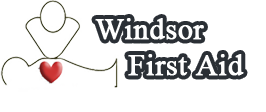Human immunodeficiency virus is the causative agent of AIDS as determined by the World Health Organization, sets point in the continuum of HIV pathogenesis in which the host has clinically demonstrated profound immune dysfunction to the person afflicted with this severely devastating and detrimental sexually transmitted disease/infection.
Since the early 90’s the definition of the human immunodeficiency virus has included a CD4-positive (CD4+) cell count for less than 200 cells/mm3 as a critical threshold criterion in the diagnosis of HIV-AIDS. CD4+ cells are a subset of lymphocytes (white blood cells) are the specific targeted cells which the AIDS virus attack leading to a suppression of the immune system response. Many opportunistic infections and neoplasms serve as more qualitative markers of immune suppression severity of an individual infected with HIV.
Transmission of the human immunodeficiency virus
The human immunodeficiency virus is transmitted through sexual contact or percutaneous injection of contaminated blood, or perinatally from an infected mother to her fetus. Most people infected by the percutaneous route are IV or injecting drug users who share contaminated needles, however transmission can also be remotely possible through contaminated blood transfusion. Over the past decade, all blood transfusions have been strictly screened and transfusion related transmission of HIV is now extremely unlikely because of the rigorous screening process of blood and blood products before being approved as safe from all types of blood borne disease causing microorganisms.
Human immunodeficiency virus and the risk to health care workers
Health care workers can be infected through the percutaneous route if needle stick or other injury from sharp objects introduce contaminated blood. Prospective studies of this predisposing risk demonstrate less than 1% of such occupational exposures (in which the source patient is infected with HIV-AIDS). Despite the rarity of transmission, health care workers actively come in contact and are involved with the care of HIV patients should take the necessary precautions to avoid needle stick or mucous membrane exposure to blood not just from suspected HIV patients but to all patients in general.
Human immunodeficiency virus and needle stick injuries
Needle stick injuries and percutaneous injuries are the most frequently reported exposure for the health care worker and other employed staff in a health care institution are more frequent and commonly reported exposure who have had occupationally acquired the infection. Employers in health care facilities are required to provide devices designed to reduce the risk of needle stick and other sharp related injuries. For more than two
decades of continued research and application, the World Health Organization has recommended post exposure prophylaxis, appropriate combination of drugs and dosing should be made on a case to case basis. The recommended algorithm to determine which combination of antiretroviral agents to be offered is specific depending on the health institution’s policies and guidelines of needle stick injuries. Nevertheless, a common protocol to all health care institutions as provided by the World Health Organization and various CDCs of developed countries is the prompt need of an incident report regarding needle stick or other percutaneous exposure as immediately as possible.
